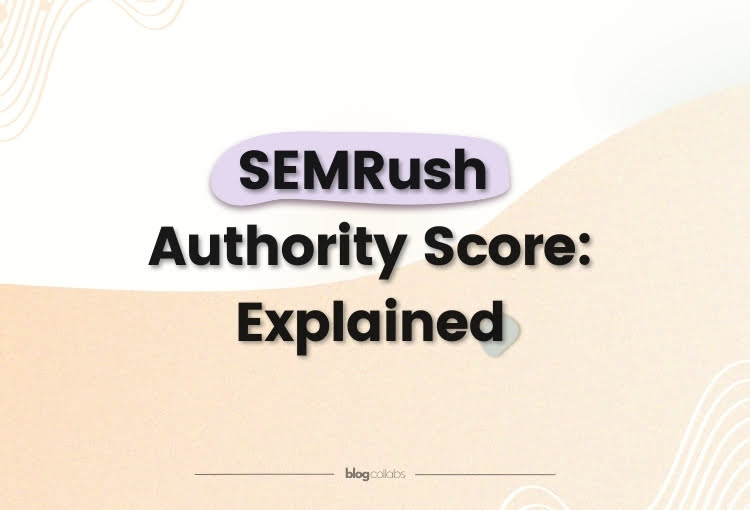8 Ways How To Humanise AI Content in 2025
The era of AI is here, and as tools get better and better, the distinction between machine-generated content and human-written becomes less clear. Even though AI certainly has a part to play in content creation, there’s still one area where it is lagging.
Emotion.
Humanising AI content is essential for effective communication, that is why in this guide, I am going to talk you through how to humanise AI content in 2025, as well as help you to build trust, drive conversions and ultimately, give your brand a voice.
Why Humanizing AI Content Matters
Humanising content is all about making the text you create sound authentic. AI can’t do this as it lacks human touch. With that said, you must take steps to correct this, because if you don’t then I guarantee your brand will pay for it later down the line.
Engagement and Connection
AI-generated text can sometimes sound impersonal, or rigid. It often fails to connect to an audience on an emotional level. Humanised content, however, is much more likely to engage readers. Relatable experiences, sympathy, and emotion can all be included. Studies have shown time and time again that people spend more time reading content that resonates with them. They’re also more likely to share, and interact with your page in general.
Sure, AI might be able to write an article about what coffee beans you should choose. With that said, it can’t explain the joy that comes from savouring a cup of coffee, the excitement of discovering a new flavour, or the hard work and passion that people put into growing the beans. AI is simply not able to provide emotional resonance, and this is exactly what keeps people coming back, time and time again.
Credibility and Trust
We live in an age where consumers are becoming increasingly wary about AI. I see it everywhere, and there’s a good reason for it. Content that feels robotic, formal, or generic can put a barrier between your audience and your brand. If you take the time to humanise your content, then you will be able to break down that barrier, while connecting to your audience on a much deeper level.
Brand Consistency
Humanised AI content can help brands to maintain a consistent voice, across every touchpoint. Whether it is a blog, social media post or even newsletter, you have to make sure that every piece of content you create has the same authoritative, friendly or compassionate tone. If you don’t humanise AI, this can be hard to achieve. I guarantee that your content will come across formulaic, or stiff, which is the last thing you want when you are trying to forge a genuine connection.
SEO
I know you’ve heard this a million times before, but I have to say it anyway. Search engines love content that is keyword optimised and well-written. AI is capable of writing keyword-rich content, but at the same time it lacks the depth and nuance required to keep readers truly engaged. Humanised content tends to be more chatty, or conversational. It’s easy to follow and builds information in layers so it’s easier to follow. As Google algorithms tend to prioritise user engagement, the longer someone stays on your page, the more likely you are to rank well.
Choosing the Best AI Humaniser Tool
If you want to humanise AI content, then you need the right tools at your disposal. AI can generate text in a matter of seconds, but a human touch is still the best way for you to bring out emotion, tone and nuance.
Quillbot
Quillbot is great. It’s a paraphrasing tool and it also allows you to input AI-generated text so you can create a more natural body of text. I love Quillbot because it is flexible, which is great when you have stiff or robotic content that needs a little variation. If you have a lot of long or convoluted sentences that are boring your readers, then this tool will fix that in a jiffy.
Wordtune
The next tool on my list is Wordtune. It’s AI-powered and offers advanced writing suggestions, so you can make your text sound more polished. It takes into account the context of the sentence and then provides suggestions, which you can accept to improve the general readability of your text. With this, you can swap between formal and casual tones,which is great for humanising content.
Spinbot
Spinbot is simple. You can expect no bells or whistles here, but it is a great tool if you want to avoid repetition, something that AI can be known for. It’s a great tool if you want to improve the flow of your content. It is also ideal if you want to make your text less repetitive. One thing that I’ve noticed when using AI is that it has the tendency to use the same, repetitive phrases. Spinbot can help here, as it uses dynamic sentence structures to keep users engaged.
When choosing a humaniser tool, I recommend that you consider things like the type of content you are working with, and the tone you are trying to convey. Using a few different tools may be a good idea here, so be sure to keep that in mind.
Undetectable AI
Undetectable AI is great, in fact, I’d even go as far to say that it WAS one of the best tools out there for humanising AI content. One of the issues with this tool is that the interface is cluttered and it makes it hard to compare content side by side, which is always a nice feature to have. You only get a small amount of free credits which is nowhere near enough if you want to be able to use a program for all of your needs. You can usually get a very low score on software like GPT Zero if you use tools like this, but to be honest, programs like this are notorious at giving false positives, so take that with a pinch of salt.
StealthWriter
Stealthwriter is a great tool that allows you to translate AI text into a more human tone. I like this tool as it gives you the chance to choose how “human” you would like your text to be. 1 means basic, and 10 means advanced. One unique feature of this tool is that it allows you to check the AI detection score of the result, by linking your tools to the API.
Adding a Human Touch to AI Text
So, those are the tools that I would suggest, if you are looking to add a human touch to your AI text. Once you have chosen the right tools, you then need to start making your AI text sound a little less, well, AI.
Natural Language Patterns
AI tends to follow the same patterns and structure when creating text. The main reason for this is because it follows an algorithm. The best way for you to make content sound less robotic would be for you to include more variation. You need to try and include interjections, as well as pauses between your thoughts.
Pronouns and Conversation
Include pronouns, such as “I,” “you,” and “we,” to try and make your text sound a little better. Rather than writing “the benefits of exercise are numerous”, write something like “you’d be surprised to see how beneficial exercise can be”. Taking a more direct approach is often a good way for you to humanise your content, while ensuring that it invites the reader to actually participate in the conversation.
Add Emotion
As I said earlier, AI lacks emotion. One key aspect of human communication is that it has the ability to convey empathy. AI, even though it is capable of producing factual information, lacks emotional depth. Take the time to acknowledge your reader’s emotions and also make sure that you are adding an element of care and attention. This is the best way for you to create something that AI cannot replicate by itself.
Tell a Story
I always think that personality really shines through when you simply take the time to tell your story. If you run a marketing company don’t ramble on about how to get results, how important SEO is or why content is king. Talk about the challenges you have personally overcome, and how you went about doing that. Write about the problems you’re facing and how you intend to overcome them. Let your audience know about any disasters you have experienced, and how you made it out the other side. If you can do this then you will soon find that it is easier for you to connect with your audience. A human touch can go a long way when you are trying to inspire human confidence.
Top Tips to Humanise AI Content
If you want to humanise AI content then there are a few other things that you can try and do, to get the result you need. I’ve listed some suggestions as to how you can humanise AI content, to take your text to that next level.
Fact Check
AI, especially ChatGPT, likes to make up random facts. I have no idea why the AI feels the need to do this, but it helps to reinforce a very important point I’m about to make. Your customer base is going to see right through your content if it sounds made up. ChatGPT will even try and convince you that the fact is real, sometimes going as far to come up with names, dates and other made-up scenarios to try and give you an answer to its question. One way for you to work around this would be for you to ask the software to fact-check what it is telling you. The software will then either provide sources, or admit that it fabricated the information. Even then, the software is likely to give you the same information if it happens again, so it’s important to manually fact-check everything. Right now it’s estimated that up to 5% of the content generated by ChatGPT is hallucinated, or made-up.
Talk Back
Chatbots are aptly named. If something sounds a little clunky, or if it seems generic, then be sure to ask the AI to revise it. Writing something more conversationally is a good thing to do here. Another great refining technique would be for you to direct the AI to ask you questions as it composes. This is a great way for you to identify gaps and ultimately come up with new information that you might be happy with. Keep pushing until you’re happy or until you get something that is substantially better. This little trick will help you to not only get what you want out of your software, but to also make sure that you are not settling for sub-par content.
Revise, Revise, Revise
Take that skeleton that AI has given you and take the tie to add a personality to it. Breathe in some life and add some quirks, examples from your own experience and words of wisdom. I guarantee that your content will sound better for it, and it also stops you from sounding so generic. You probably have a lot of things you can add to the content that AI is generating, so run with it. Add some direct phrasing too, so you can eliminate passive language and other cliches. Where you feel as though it makes sense you can also enrich your descriptions with some elements that appeal to the human senses. Think of things like sight, sound, scent, touch and taste. Anything that helps you to communicate the way that you feel, or anything that you can use to try and add human emotion will go a long way here. Remember you’re trying to satisfy Google’s EEAT guidelines here, so humanising your content is key if you want to actually rank in search engine results.
Add Empathy
Acknowledging your reader challenges is one of the best things you can do. One key aspect of human communication is the ability to convey empathy. AI, even though it’s capable of producing factual information, often lacks depth. Say things like “I know how challenging it can be” as this allows you to relate directly to your customers. It also helps you to add a personal touch to your content, which is something that AI cannot do entirely on its own.
Adjust the Tone
AI often generates cardboard content in a one-size-fits-all tone. Sure, this can sometimes get the job done, but if you want to stand out from the millions of other internet pages listed on Google right now, you need to do something more. Content targeting a young audience may benefit from adopting a more casual, or informal tone. If you are targeting professionals then having a more authoritative tone may work. With that said, if your content feels stiff or robotic then you shouldn’t hesitate to keep adjusting it until it fits with your overall brand picture.
Avoid Jaron
Let me let you in on a bit of a secret. Business owners often think that jargon makes them sound clever, but this isn’t; the case. People hate it. In an attempt to sound like they know what they are talking about, AI often overuses jargon or complex language. While terminology can be necessary if you are writing for a technical article or an industry report, it’s not got much use outside of this. One thing I recommend that you do is eliminate anything that is clunky or just complex. Offer simpler alternatives and your content will be much easier to read.
Add Humour
Believe it or not, humour is one of the best ways for you to make your content feel human. It can help you to break the ice and it also lightens the tone. A witty comment or even a playful observation is often the best way for you to resonate with your customers and it is also a good way for you to humanise your content. Ensure that the humour fits your content and that it is appropriate for your audience if you can, though. People searching for a funeral home probably aren’t interested in you cracking jokes.
<iframe width=”560″ height=”315″ src=”https://www.youtube.com/embed/UsNwi99ch6E?si=b0wc4jq8g-6U3o8c” title=”YouTube video player” frameborder=”0″ allow=”accelerometer; autoplay; clipboard-write; encrypted-media; gyroscope; picture-in-picture; web-share” referrerpolicy=”strict-origin-when-cross-origin” allowfullscreen></iframe>
Benefits of Humanizing AI Text
I have to say that humanising content isn’t just about bypassing AI checkers. It’s about making it sound better and it’s also about offering significant practical benefits. As I’ve said before, AI checkers are mostly useless anyway, so the true value of you trying to humanising content should really lie within the benefits it offers to your audience.
Reader Engagement
Humanising AI content really does help you to enhance reader engagement. Humanising content increases the chances of you getting the reader to return. It also allows you to add unique calls to action as well as adding more emotional depth overall.
Greater Trust
Humanising your content is the best way for you to build greater trust and authority. It also allows you to present your information in a way that feels more authentic. This is the best way for you to foster long-term loyalty and it also allows you to elevate your marketing campaigns.
Improved Conversion Rates
I cannot stress this enough. Humanising content is one of the best ways for you to improve your conversion rate. Humanised content is a great way for you to present information in a more reliable, human way. It also helps you to position your brand as being an authority, which is one of the best ways for you to get more sales, email sign-ups, or any other kind of action.
Making AI Content Undetectable
AI content is becoming more advanced. There’s no doubt about that, but you do need to make sure that your AI content has a natural feel. People can spot robotic language from a mile away, so focus on subtlety and nuance. One of the biggest indicators that content has been AI-generated is lack of nuance. Humans are often filled with shades of grey. It can consider multiple opinions and it is also able to address counterarguments. It offers nuanced takes on very complex issues, so you need to try and incorporate this within your content if you can.
I’ve said it before, and I’ll say it again. AI checkers suck. The amount of times I’ve been called out for using AI when I’ve not touched it is unreal. People swear by them and there’s just no need. You don’t need to use software to tell you whether your content sounds like it’s AI-generated. You just need to make your user base believe that you’re talking to them directly, rather than copying and pasting generated text from a chatbot. Zero GPT, GPT Zero, and Undetectable AI are tools that you can use in your arsenal but don’t rely on them entirely.
Remember companies like this charge you to do searches, so it’s in their best interest to flag you for high AI results. Focus on how your content feels, rather than numbers, and you’ll go far.
<iframe width=”560″ height=”315″ src=”https://www.youtube.com/embed/MWCAVBXhcbU?si=gouaPMvEVwtIsRAd” title=”YouTube video player” frameborder=”0″ allow=”accelerometer; autoplay; clipboard-write; encrypted-media; gyroscope; picture-in-picture; web-share” referrerpolicy=”strict-origin-when-cross-origin” allowfullscreen></iframe>
Future Trends in Humanised AI Content
So as a final note, what future trends can we expect to see in humanised AI content? We can expect to see AI-powered emotional intelligence, for sure. AI systems need to learn how to tailor their content to different emotional triggers allowing for empathetic communication and personalised responses. Integration with human creativity is so important as well. Instead of seeing AI as a replacement for humans, it’s important to look at the two working in conjunction with each other. AI will never surpass human creativity, as it relies on human input to be creative and learn. Lastly, ways to customise content on the fly would also be a welcome trend. Changing the tone, or fitting the style of previous posts would be a huge upgrade, one that would surely save content creators hours.
So in conclusion, humanising AI content isn’t hard. It does, however, take a bit of work and a lot of patience. AI is great, there’s no doubt about that. It’s set to make our lives a lot easier too, but only if it’s humanised.







